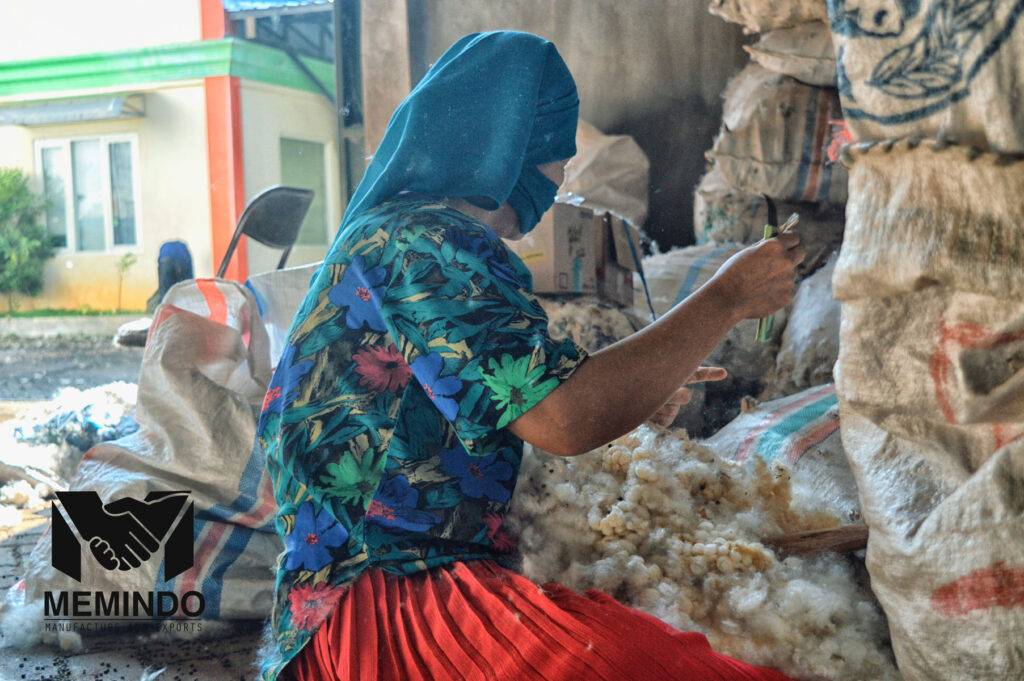Kapok, or Java cotton, holds more than just economic importance—it also has a profound social value, particularly for rural communities in tropical regions like Indonesia. This natural fiber connects tradition, livelihoods, and sustainability in ways that contribute to the well-being of local populations. Below, we explore how kapok’s social significance is deeply intertwined with everyday life.
1. Strengthening Rural Economies
In many rural areas, kapok serves as a valuable cash crop. Its ease of cultivation makes it accessible to small-scale farmers, who can grow the tree without heavy investments in fertilizers or pesticides. After harvest, the fiber extracted from kapok pods is sold to local and international markets, providing farmers with an essential source of income.
For families who rely on subsistence farming, kapok offers a way to diversify their income streams, providing financial stability in regions where other employment options may be limited. This income not only supports daily needs but also contributes to long-term improvements in education and healthcare for these families.
2. Creating Opportunities for Women
The kapok industry often involves manual labor, especially during the processing phase. This provides job opportunities for women, who are frequently involved in cleaning, sorting, and preparing kapok fiber for sale or further processing. Such activities have the dual effect of economically empowering women and enhancing their status in their households and communities.
Women who engage in kapok-related work can gain financial independence, which contributes to shifts in household dynamics, giving them a stronger voice in decision-making. In many cases, this additional income helps women invest in their children’s education, supporting the next generation and breaking cycles of poverty.
3. Cultural and Historical Importance
Kapok is more than just a fiber—it’s woven into the cultural fabric of many communities. Historically, kapok-filled mattresses, pillows, and cushions have been a staple in Indonesian households. The use of kapok in traditional ceremonies, such as weddings or community gatherings, highlights its role beyond mere utility, adding a symbolic dimension.
For some communities, working with kapok has been passed down through generations. Families take pride in maintaining these traditions, preserving both their cultural identity and a sustainable way of life. This cultural attachment fosters a sense of belonging and continuity, helping maintain social cohesion in rapidly changing times.
4. Sustainability and Environmental Stewardship
The kapok tree is naturally aligned with the principles of sustainability. It requires minimal intervention to grow, thrives in tropical climates, and contributes to biodiversity. By encouraging the cultivation of kapok, communities are also engaging in environmentally responsible practices that support reforestation and soil conservation.
From an ecological perspective, kapok-based products offer a natural, biodegradable alternative to synthetic materials. The fiber is often used in mattresses, cushions, and insulation materials, offering a green solution to industries that typically rely on petrochemical-based products. By choosing kapok, consumers and producers alike are supporting a more sustainable, eco-friendly economy.
5. Fostering Social Connections and Collaboration
Kapok has a unique ability to bring people together. Whether it’s in the context of farming, processing, or community-based enterprises, kapok-related activities often require cooperation and shared effort. Farmers work together to harvest and sell kapok, while women form groups to process the fiber, creating an environment of mutual support.
This collaborative spirit extends beyond the economic realm. In some communities, kapok farming and production are tied to community development initiatives that aim to improve local infrastructure, education, and healthcare. These efforts highlight how kapok can be a catalyst for broader social progress, fostering stronger, more resilient communities.

Conclusion
Kapok’s social value extends far beyond its utility as a natural fiber. It is deeply embedded in the economic, cultural, and environmental fabric of rural communities. As a sustainable crop, it not only supports livelihoods but also promotes gender equality, cultural preservation, and environmental responsibility.
In an increasingly interconnected world, where sustainability and social impact are key priorities, kapok serves as a reminder of how traditional practices can still offer modern solutions. It is a resource that uplifts communities, respects the environment, and honors cultural heritage, making it a truly valuable asset for the future.

